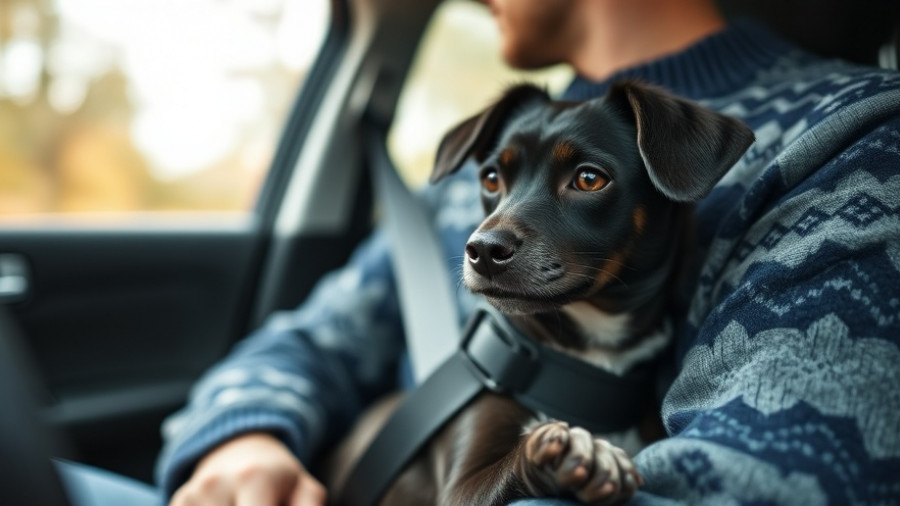
Why Every Dog Owner Should Prioritize Safety on the Road
Every year, over 100,000 furry companions are injured in car accidents across the United States. As dog owners, it's our responsibility to keep our pets safe, but many still travel without the proper restraints. While ensuring your dog’s safety might seem daunting, looking into a free dog safety belt can significantly enhance your pet’s security without straining your wallet.
Understanding the Different Types of Dog Safety Belts
The market offers several options for dog safety belts, each designed with different features to cater to various needs. Here are the main types:
1. Harness-Style Safety Belts
Harness-style systems are the gold standard when it comes to dog safety. They are designed to distribute crash forces evenly across your dog’s chest and back. According to the Center for Pet Safety, these belts have successfully passed rigorous tests, including 30-mph crash simulations, making them among the safest options available. Most quality harness belts can accommodate dogs weighing between 15 and 120 pounds, making them versatile for various breeds.
2. Clip-On Systems
For quick trips around town, clip-on systems provide a no-fuss solution. They attach directly to your dog’s collar or harness and work best for smaller dogs under 40 pounds. While they are lightweight and often free through veterinary safety programs, they don’t offer the same level of protection as harnesses. Experts advise using these restraints only for short journeys at lower speeds.
3. Booster Seat Combinations
Booster seat combinations are innovative for small dogs. They elevate your furry friend, providing a better view and enhanced safety through integrated harness systems. Perfect for breeds under 20 pounds, these seats not only keep your pet secure but also comfortable during longer trips. Many pet insurance providers offer these free to new customers, making them an accessible option for those with smaller dogs.
The Importance of Certification Standards
When selecting a dog safety belt, beyond the type, it’s essential to consider safety certifications. Dr. Michael Lund from the ASPCA highlights that the Center for Pet Safety is the only independent organization that rigorously tests dog restraints. Only 12 products have passed their high standards out of over 200 tested. Restraints without certification can be a huge risk, as over 80% of pet restraints fail basic safety tests according to the American Automobile Association.
Getting the Right Fit
To ensure optimal safety, properly fitting your dog’s safety belt is critical. The two-finger rule is a helpful guideline—there should only be enough space to fit two fingers between the strap and your dog’s body. A loose belt increases the risk of injuries during an impact, while a belt that’s too tight can be uncomfortable and restrict breathing.
Making Informed Choices for Pet Safety
Knowing the features that separate quality restraints from basic ones is vital. Seek out options that come with proper certifications, are suitable for your dog's size and weight, and provide a secure fit. Pet owners can look to organizations like veterinary clinics and pet insurance companies that often offer certified products at no cost. This can be an excellent way to affordably enhance your pet's safety.
A Final Word on the Journey Ahead
Investing in a free dog safety belt is a small step with significant implications for your dog’s safety during car travels. Whether you opt for a harness-style system, clip-on restraint, or a booster seat, the key is to prioritize the protection of your furry friend. Remember, every journey becomes more enjoyable with an extra layer of safety for your pet.
Now that you know the essentials, make a commitment to securing your dog's safety on the road today!
 Add Row
Add Row  Add
Add 




Write A Comment